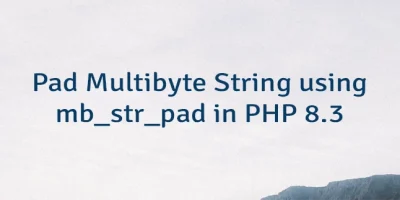In versions prior to PHP 8.0, the throw keyword is a statement. It means that throw cannot be used in places where only a single expression is expected.
Since PHP 8.0, the throw keyword is an expression and may be used in arrow functions, the null coalescing (??) and ternary (:?) operators, or in other places where a single expression is accepted.
throwusage with arrow function:
<?php
$fn = fn() => throw new Exception('Not implemented');
$fn();throwusage with null coalescing operator:
<?php
$id = $_GET['id'] ?? throw new Exception('Variable is not set or value is null');throwusage with ternary operator:
<?php
$id = isset($user) ? $user->id : throw new Exception('Variable is not set or value is null');throwusage with shorthand ternary operator:
<?php
$_POST['id'] = 0;
$id = $_POST['id'] ?: throw new Exception('Variable is falsy');throwusage withifstatement:
<?php
if (isset($_GET['id']) || throw new Exception('Variable is not set or value is null')) {
$id = (int) $_GET['id'];
}



Leave a Comment
Cancel reply